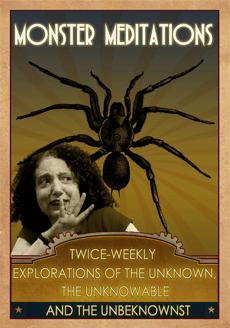A shrug can communicate a thousand words. I think an eye roll carries at least 500 and there’s always the foot tap and those annoying drumming fingers—quick, impatient phrases when nothing is said out loud. The grimace before a concession says more than the words of retreat; and eyes brimming with joyful tears are often more eloquent than a long speech. Unconscious body language and facial expressions can be useful weapons in a storyteller’s arsenal—ways to enhance OR undermine—words spoken by a character.
The body language between characters is also an opportunity to express unspoken thoughts and feelings. A glance between secret lovers is a romance fiction cliché, as is the false hostility that covers for secret intimacy in public.
It pays to look around and study, if quietly and from a distance, the silent behavior of strangers. I find all sorts of situations to be great laboratories of body language. I’ve imagined entire character backstories on the basis of observations—especially when I don’t speak the language or am too far away to hear.
One of my favorites labs is the line at my local Whole Foods. This started as my attempt to figure out which line to join as the individual lines feed into the next available cashier instead of the conventional choose a line and hope the cashier is fast and none of the patrons are coupon fanatics, arrangement. At Whole Foods the trick to a shorter wait is not the number of people on each of the queues but the number of shopper groups or duos versus individuals. As people wait on line together, heads bent to their phones or reading the Yoga magazines available for impulse shopping, it’s not always easy to see who is with whom and who happens to be shopping alone.
I usually pause for a minute to assess my chances at a short line and I look for subtle body tells. How close do people stand in relation to one another? If one person is bouncing or singing along with the music, is the other? People shopping together will often respond to the same music. Of course when a mom is singing her teenaged child might be shivering with embarrassment. That means they are shopping together—even if the kid can’t wait to get out of the store!
Next time you’re waiting on a line at a market, in an airport, outside a movie theater, try my body language game. It may inspire a non-verbal ‘character tell’ in your next story OR, it’ll just pass the time.





Reading students’ body language was always interesting when I was in the classroom. There would be days where an entire class would be rather well-behaved and following along with the lesson, but as I tuned into their body language, it would be come clear they weren’t tuning in at all. That’s when we’d shift gears and I’d do something to make them get up and out of their chairs.
Good teachers have to read body language all the time. They are almost like stand-up comics… making sure the audience is with them!
I’m consciously integrating some non-verbal communications into the novel-in-progress draft. Some characters betray more of themselves in movements, others are better able to see the meaning in facial expressions. Like in real life, some people are better at communicating without words.
It’s also amazing what you can pick up without consciously ‘looking’. I remember being in a supermarket one day and being in a queue with a three or four year old who was having a complete and utter tanty. It was impossible not to pay attention to /him/, but then I [and probably half the supermarket] glanced up at his mother and the closed expression on her face told a whole story –
– modern Mum conditioned to believe that saying ‘no’ and meaning it would be ‘bad’ for her precious bundle,
– but no one had told her how frustrating not saying no, and meaning it, would feel, or how irate other people would be with her,
– but she’s sticking to her guns even if it kills her
– but with each ear piercing scream she is loving her child less, or perhaps that closed in look is meant to hide how much she would like to wring his neck?
Of course, I was probably way out in my assessment of her expression but…thinking about it distracted me from the child I would have liked to throttle myself!
I like the character study you gleaned from that observation. Is it accurate? Probably, yes. Was she burning to say NO or was she simply burning to get home and pour herself a glass of wine? Was she going to run home and check the chapter on tantrums in a parenting book?
However you spin it, there’s a story there. In the stony silence of the mother, in the galloping “tanty” (FYI love the Aussie abbreviation) which no doubt included vigorous jumping and stomping, in the angry and expressions, the foot-tapping impatience to get out and away from the yowling child… There’s so much there.
It’s the opening for a story!